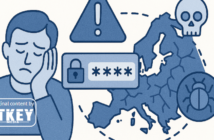Test Fast, Die Cheap: How to Uncover Unviable Ideas and Avoid Wasting Time
Please find Pt. 1 here.
How to identify the problem and build a solution concept from it?
I’ll provide an example using a hypothetical product, and we’ll continue to develop this very business idea onwards.
I occasionally subscribe to certain products and services or sign up for trial periods to give them a try. As a result, I receive numerous notifications about subscription charges. I would like to cancel most of them, but I keep forgetting to do so. Does that sound familiar?
That’s how we identified the problem, and from there on, the idea for a potential product starts to take shape: a service that notifies users about subscription charges and allows them to confirm or reject these transactions. This way, I could manage my subscriptions and eliminate unwanted expenses. The next step is to assess whether this idea is relevant to the market.
Step 1: We start with the problem and describe the business model
Considering the example of the subscription management product: Many customers tend to forget about the trial periods or subscriptions they’ve started, which leads to unexpected credit card charges. This causes stress and a loss of control over their finances – and this is the problem.
Next, let’s consider the target audience. For our service, I suggest categorizing users into two distinct categories:
Early Adopters: These are the individuals who are most affected by the problem and the easiest to reach.
Potential Clients: This group comprises those who will need to be introduced to the idea and its benefits, so this includes everyone else. For instance, it could be people who generally manage subscription cancellations in a timely manner, but find it uncomfortable and time-consuming. They would also appreciate a convenient tool for canceling subscriptions, but it’s not a problem that greatly concerns them.
Next, we move on to creating a value proposition, where we outline why the customer should purchase our product – in other words, the specific value we offer them. For instance, with our subscription management service, users can avoid unforeseen charges, eliminate issues with refunds, and efficiently manage subscriptions with speed and clarity.
The next crucial element of the product strategy is the business model, which will encompass:
Revenue Streams (Monetization): Sources of income, such as subscriptions, advertising, etc.
Pricing: Willingness to pay and the payment model.
Lifetime Value (LTV): The average revenue a customer will generate throughout their lifetime.
Cost Structure: Fixed and variable costs for business owners.
We need to consider, outline, and anticipate various hypotheses. Using our idea as an example, we could generate revenue through service subscriptions (subscription fee), or create revenue shared models and take a percentage, such as cashback from transactions made with MasterCard and Visa cards.
At this stage, numerous challenges may surface, indicating potential impracticality of the initial idea. In the end, when the document is ready, I always ask myself if I want to continue developing the idea. If there are no reservations, we proceed to evaluate the idea more extensively.
Step 2. Envision yourself as the customer
Now you need to put yourself in the client’s shoes and look at your proposal through their eyes. You can create a landing page for a hypothetical product and consider whether you’re willing to pay for it.
Additionally, you can use ChatGPT to outline the landing page structure. This outline will provide a rough visual of how the page will be arranged, including details like buttons, testimonials, calls to action, and accompanying text. Alternatively, you can work with a copywriter and a designer.
After you’ve put together a detailed description or a refined website mockup, take a break for a few days. This break will give you a chance to look at your work with fresh eyes and understand how potential customers might perceive it. If you don’t encounter any doubts during this phase and your idea still seems strong, you can confidently move forward to the third step.
Please find Pt. 3 here.

Dmytro Breslavets is a co-founder of the IT company P2H, which over 17 years has undergone a long and challenging journey from converting design into markup to creating comprehensive solutions for digitizing government services.





